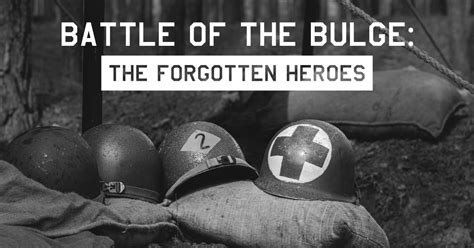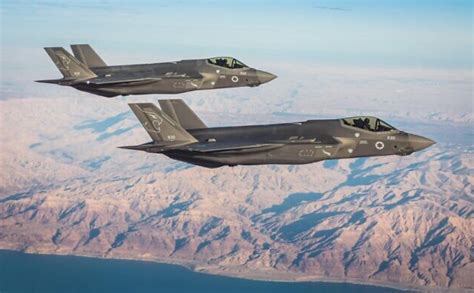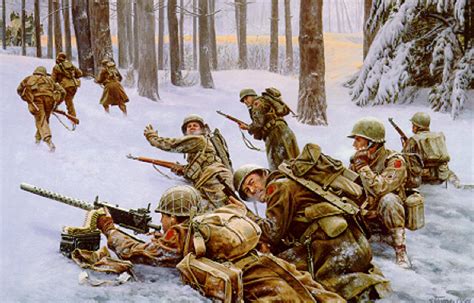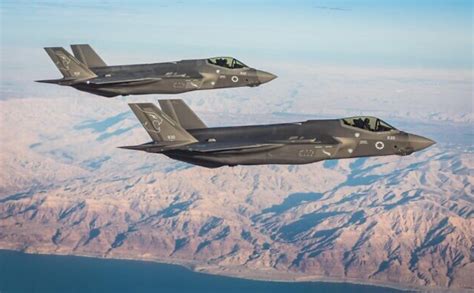
A U.S. Army division, long overlooked for its critical role in the Battle of the Bulge, is finally receiving belated recognition for its valiant stand against overwhelming German forces in December 1944. The 106th Infantry Division, largely composed of inexperienced soldiers, faced the brunt of the initial German offensive in the Ardennes Forest, suffering heavy casualties but significantly delaying the enemy’s advance and disrupting their plans.
Seventy-nine years after the brutal winter battle, efforts are underway to ensure the 106th Infantry Division’s contribution is appropriately acknowledged in military history and honored for its sacrifice. Historians and veterans’ advocates argue that the division’s initial setbacks overshadowed its subsequent resilience and the crucial time it bought for Allied reinforcements to arrive.
The Battle of the Bulge, Germany’s last major offensive on the Western Front, aimed to split the Allied armies and recapture the port of Antwerp. The 106th Infantry Division was positioned in a relatively quiet sector of the Ardennes, considered by some to be a “rest area” for inexperienced troops. However, this perceived lull in activity proved tragically deceptive.
On December 16, 1944, the German army launched a massive surprise attack, spearheaded by Panzer divisions, directly at the 106th’s positions. The division, nicknamed the “Golden Lions,” was quickly overwhelmed. Two of its three regiments, the 422nd and 423rd, were encircled and forced to surrender, resulting in the largest mass surrender of U.S. troops to the Germans since the Civil War.
“They were thrown into the deep end,” said historian Peter Schrijvers, author of “The GI War: Americans in Europe During World War II.” “They were untested, undertrained, and facing some of the best troops Germany had to offer.”
While the initial defeat was devastating, elements of the 106th, particularly the 424th Regiment and supporting artillery units, along with attached engineers and other detachments, fought fiercely, holding key defensive positions and slowing the German advance. This resistance, though costly, provided vital time for General Dwight D. Eisenhower to redeploy Allied forces and reinforce the threatened sector.
“The 106th paid a heavy price,” explained military historian Kevin Hymel. “But their sacrifice bought precious time for the Allies to regroup and ultimately defeat the German offensive.”
The delay caused by the 106th and other defending units significantly hampered the German timetable. The offensive, intended to reach Antwerp within days, bogged down in fierce fighting and logistical challenges. The weather also played a crucial role, with heavy snow and freezing temperatures hindering movement and supply lines.
Recognition of the 106th’s role has been a long time coming. For years, the division’s story was overshadowed by the scale of the initial defeat and the overall narrative of the Battle of the Bulge, which focused on the heroic stands of other units, such as the 101st Airborne Division at Bastogne.
However, renewed efforts are underway to correct this historical oversight. Books, documentaries, and museum exhibits are now highlighting the 106th’s contribution. Veterans’ organizations are also working to ensure that the division’s soldiers receive the recognition they deserve.
One such effort involves advocating for the posthumous awarding of medals and commendations to soldiers of the 106th who displayed extraordinary bravery and sacrifice. Another initiative focuses on preserving the historical sites associated with the division’s defense, ensuring that future generations can learn about their story.
The renewed attention is welcomed by veterans and their families, who have long felt that the 106th’s story has been unfairly neglected. They hope that this recognition will finally give these forgotten heroes the honor and respect they earned on the battlefield.
The story of the 106th Infantry Division serves as a reminder of the human cost of war and the importance of recognizing the contributions of all who serve, regardless of their initial successes or setbacks. It is a story of courage, sacrifice, and ultimately, resilience in the face of overwhelming odds.
The division’s experience also highlights the critical role of training and preparation in modern warfare. The lack of experience among many of the 106th’s soldiers contributed to their vulnerability during the initial German assault. This underscores the need for adequate training and realistic simulations to prepare soldiers for the realities of combat.
Furthermore, the Battle of the Bulge, and the 106th’s experience in particular, provides valuable lessons in military strategy and leadership. The German offensive exposed weaknesses in the Allied lines and highlighted the importance of maintaining strong defensive positions and effective communication.
The story of the 106th is not just a military history lesson; it is also a human story about ordinary people thrust into extraordinary circumstances. It is a story about courage, fear, resilience, and the enduring bonds of camaraderie forged in the crucible of war. As time passes and fewer veterans remain, it becomes even more crucial to preserve and share these stories, ensuring that the sacrifices of the 106th Infantry Division, and all those who served in World War II, are never forgotten.
The ongoing efforts to recognize the 106th Infantry Division represent a significant step towards a more complete and accurate understanding of the Battle of the Bulge. By acknowledging the contributions of all those who fought, regardless of their unit or rank, we honor their service and ensure that their sacrifices are never forgotten.
The failure to fully acknowledge the 106th’s contribution sooner also points to a broader issue of how history is written and remembered. Often, narratives are shaped by initial impressions and overall outcomes, overlooking the nuances and complexities of individual battles and the contributions of specific units. It is important to critically examine historical accounts and ensure that all voices are heard, especially those of the often-overlooked soldiers who fought and sacrificed on the front lines.
The geographical location of the battle also influenced the experience of the 106th. The Ardennes Forest, with its dense woods and rugged terrain, presented significant challenges for both the attackers and the defenders. The harsh winter conditions, with deep snow and freezing temperatures, further exacerbated the difficulties, making movement and supply operations extremely challenging. The 106th, lacking experience in winter warfare, was particularly vulnerable to the elements.
The impact of the Battle of the Bulge extended far beyond the immediate battlefield. The German offensive, though ultimately unsuccessful, caused significant disruption to the Allied war effort and prolonged the war in Europe. The battle also had a profound impact on the lives of the soldiers who fought there, many of whom suffered physical and psychological wounds that would last a lifetime. The 106th Infantry Division, in particular, experienced a high rate of casualties and captured soldiers, leaving a lasting scar on the unit and its members.
The renewed recognition of the 106th Infantry Division is not just about honoring the past; it is also about learning from it. By studying the experiences of the 106th, military historians and strategists can gain valuable insights into the challenges of modern warfare and the importance of training, preparation, and leadership. The story of the 106th serves as a cautionary tale about the dangers of underestimating the enemy and the importance of maintaining a strong defense.
The families of the soldiers who served in the 106th have played a crucial role in keeping the division’s story alive. Through their own research, documentation, and advocacy, they have ensured that the sacrifices of their loved ones are not forgotten. Their efforts have been instrumental in raising awareness of the 106th’s contribution and in securing the long-overdue recognition that the division deserves.
The media has also played a role in highlighting the story of the 106th. Through articles, documentaries, and other forms of media coverage, the public has become more aware of the division’s experience and its significance in the context of the Battle of the Bulge. This increased awareness has helped to generate support for efforts to recognize the 106th and to preserve its history.
The ongoing efforts to recognize the 106th Infantry Division are a testament to the enduring power of memory and the importance of honoring those who have served their country. By remembering their sacrifices and learning from their experiences, we can ensure that their legacy lives on for generations to come.
The role of artillery support during the battle cannot be understated. Despite the initial setbacks, the artillery units attached to the 106th played a critical role in slowing the German advance and inflicting casualties on the enemy. Their accurate and sustained fire helped to disrupt German formations and provided vital support to the infantry units holding defensive positions. The bravery and skill of these artillerymen deserve special recognition.
The story of the 106th also highlights the importance of communication and coordination in modern warfare. The initial German attack disrupted communication lines and created confusion among the Allied forces. This made it difficult to coordinate defensive efforts and to provide timely support to the units under attack. The experience of the 106th underscores the need for robust communication systems and effective leadership to maintain cohesion and control in the face of adversity.
The psychological impact of the Battle of the Bulge on the soldiers who fought there was profound. Many soldiers experienced intense fear, trauma, and grief. The loss of comrades, the brutality of the fighting, and the harsh winter conditions took a heavy toll on their mental and emotional well-being. The long-term effects of these experiences can still be felt by veterans today.
The efforts to recognize the 106th Infantry Division also serve as a reminder of the importance of providing adequate support to veterans after they return home from war. Many veterans struggle with physical and psychological wounds that require ongoing care and treatment. It is our responsibility to ensure that they receive the support they need to heal and to live fulfilling lives.
The story of the 106th Infantry Division is a complex and multifaceted one. It is a story of courage, sacrifice, resilience, and loss. It is a story that deserves to be told and remembered, not just for the sake of honoring the past, but also for the sake of learning from it and ensuring that the sacrifices of these forgotten heroes are never forgotten.
The fact that the 106th Infantry Division was largely composed of inexperienced soldiers underscores the importance of proper training and preparation for combat. While courage and determination are essential qualities, they are not enough to overcome a lack of training and experience. The soldiers of the 106th were thrust into a desperate situation with limited preparation, and the consequences were devastating.
The story of the 106th also serves as a reminder of the unpredictable nature of war. Despite the Allied belief that the Ardennes sector was relatively quiet, the Germans were able to launch a surprise attack that caught the 106th off guard. This highlights the importance of vigilance and preparedness, even in seemingly safe areas.
The long-overdue recognition of the 106th Infantry Division is a testament to the power of persistence and the importance of advocating for those who have been overlooked. The veterans and their families who have worked tirelessly to keep the 106th’s story alive deserve our gratitude and admiration.
The Battle of the Bulge was a pivotal moment in World War II, and the contributions of all who fought there should be recognized and remembered. The story of the 106th Infantry Division is an important part of that story, and it is a story that deserves to be told for generations to come.
The impact of the weather conditions on the Battle of the Bulge cannot be overstated. The heavy snow and freezing temperatures made movement difficult, hampered supply lines, and contributed to the suffering of the soldiers. The 106th Infantry Division, lacking experience in winter warfare, was particularly vulnerable to the elements.
The story of the 106th also highlights the importance of strong leadership in times of crisis. While some leaders performed admirably, others were overwhelmed by the situation. The ability to make quick decisions, maintain morale, and coordinate defensive efforts was crucial to survival.
The renewed recognition of the 106th Infantry Division is a positive step towards a more complete and accurate understanding of World War II. By acknowledging the contributions of all those who served, we can ensure that their sacrifices are never forgotten and that their legacy lives on.
The challenges faced by the 106th Infantry Division in the Battle of the Bulge were immense. They faced a well-trained and well-equipped enemy, harsh winter conditions, and a lack of experience. Despite these challenges, they fought bravely and made a significant contribution to the Allied war effort.
The story of the 106th serves as a reminder of the human cost of war. The soldiers who fought in the Battle of the Bulge endured unimaginable hardships and made extraordinary sacrifices. We must never forget their courage and their dedication to their country.
The ongoing efforts to recognize the 106th Infantry Division are a testament to the enduring power of memory and the importance of honoring those who have served. By remembering their sacrifices and learning from their experiences, we can ensure that their legacy lives on for generations to come.
The failure to adequately recognize the contributions of the 106th Infantry Division for so long is a reminder of the biases and oversights that can occur in historical narratives. It is important to critically examine historical accounts and ensure that all voices are heard, especially those of the often-overlooked soldiers who fought and sacrificed on the front lines.
FAQ:
-
What was the 106th Infantry Division’s role in the Battle of the Bulge? The 106th Infantry Division faced the initial brunt of the German offensive in the Ardennes Forest on December 16, 1944. Although suffering heavy losses, their resistance significantly delayed the German advance, buying crucial time for Allied reinforcements to arrive. The 422nd and 423rd regiments were encircled and forced to surrender. However, elements of the 106th, particularly the 424th Regiment and supporting artillery units, fought fiercely, holding key defensive positions and slowing the German advance. This bought precious time for General Dwight D. Eisenhower to redeploy Allied forces.
-
Why has the 106th Infantry Division’s contribution been overlooked for so long? The division’s initial setbacks, including the surrender of two regiments, overshadowed its subsequent resilience. Other units, such as the 101st Airborne Division at Bastogne, received more prominent attention in the overall narrative of the Battle of the Bulge. This led to the 106th’s contributions being minimized or ignored for many years.
-
What efforts are currently underway to recognize the 106th Infantry Division’s role? Efforts include books, documentaries, and museum exhibits highlighting the 106th’s contribution. Veterans’ organizations are advocating for posthumous medals and commendations for soldiers who displayed extraordinary bravery. There are also initiatives to preserve historical sites associated with the division’s defense.
-
What were the main challenges faced by the 106th Infantry Division during the Battle of the Bulge? The 106th was largely composed of inexperienced soldiers facing a surprise attack by seasoned German forces. They were positioned in a sector initially considered quiet, and the harsh winter conditions, including heavy snow and freezing temperatures, further hampered their ability to defend effectively. “They were untested, undertrained, and facing some of the best troops Germany had to offer,” according to historian Peter Schrijvers.
-
What lessons can be learned from the 106th Infantry Division’s experience in the Battle of the Bulge? The 106th’s experience highlights the importance of adequate training and preparation for combat, the unpredictable nature of war, and the need for strong leadership and effective communication in times of crisis. It also underscores the importance of recognizing the contributions of all who serve, regardless of initial successes or setbacks, and the need to provide adequate support to veterans after they return home from war.
The initial deployment of the 106th Infantry Division to what was perceived as a quiet sector of the Ardennes front proved to be a strategic miscalculation with devastating consequences. The division, comprised largely of soldiers who had not yet seen combat, was intended to gain experience in a low-threat environment. However, this assessment failed to account for the potential for a large-scale German offensive, leaving the division vulnerable and ill-prepared for the onslaught that was to come.
The intelligence failures that contributed to the surprise of the German offensive are a subject of ongoing historical debate. While some argue that Allied intelligence agencies were aware of the buildup of German forces in the region, others maintain that the scale and timing of the attack caught them completely off guard. Regardless of the specific causes, the intelligence failures had a significant impact on the ability of the 106th Infantry Division to prepare for the attack and mount an effective defense.
The leadership within the 106th Infantry Division has also come under scrutiny in the years since the Battle of the Bulge. Some historians have criticized the division’s commanders for failing to adequately prepare their troops for combat and for making tactical errors that contributed to the division’s initial setbacks. However, others have defended the leaders, arguing that they were faced with an impossible situation and that they did the best they could under extremely difficult circumstances.
The story of the 106th Infantry Division is not just a story of military defeat; it is also a story of human resilience and perseverance. Despite the overwhelming odds they faced, the soldiers of the 106th fought bravely and inflicted significant casualties on the German forces. Their resistance, though ultimately unsuccessful in preventing the German advance, bought valuable time for the Allies to regroup and launch a counteroffensive.
The renewed recognition of the 106th Infantry Division is a fitting tribute to the courage and sacrifice of these often-overlooked soldiers. By acknowledging their contributions, we honor their service and ensure that their story is never forgotten. It also serves as a reminder of the importance of learning from the past and of ensuring that our military forces are adequately trained and prepared for the challenges of modern warfare.
The resilience displayed by elements of the 106th, particularly the 424th Regiment, even after the devastating losses of the 422nd and 423rd, speaks volumes about the character and determination of the American soldier. Despite being outnumbered and outgunned, they continued to fight, holding key defensive positions and slowing the German advance. This unwavering commitment to duty in the face of adversity is a testament to the spirit of the 106th Infantry Division.
The failure to fully integrate and utilize the experience of veteran non-commissioned officers (NCOs) within the 106th may have also contributed to the division’s vulnerability. NCOs typically provide crucial leadership and guidance to inexperienced soldiers, helping them to navigate the challenges of combat. The absence of a sufficient number of seasoned NCOs within the 106th may have left the division less prepared to face the German offensive.
The logistical challenges faced by the 106th Infantry Division during the Battle of the Bulge further compounded their difficulties. The harsh winter conditions made it difficult to transport supplies and equipment to the front lines, leaving the soldiers undersupplied and ill-equipped to withstand the German attack. The lack of adequate winter clothing and equipment also contributed to the suffering of the soldiers and reduced their effectiveness in combat.
The use of propaganda by both sides during the Battle of the Bulge played a significant role in shaping perceptions of the conflict. The Germans attempted to demoralize the Allied forces by exaggerating their successes and spreading rumors of impending defeat. The Allies, in turn, sought to maintain morale and rally support for the war effort by downplaying the German gains and emphasizing the resilience of the American and British troops.
The long-term psychological effects of the Battle of the Bulge on the soldiers who fought there have been the subject of numerous studies. Many veterans of the battle suffered from post-traumatic stress disorder (PTSD) and other mental health issues as a result of their experiences. The renewed recognition of the 106th Infantry Division is an important step towards acknowledging the sacrifices of these veterans and providing them with the support they need to heal and to live fulfilling lives.
The geographical characteristics of the Ardennes Forest played a critical role in shaping the course of the Battle of the Bulge. The dense woods and rugged terrain provided cover for the German forces, allowing them to launch a surprise attack. However, the terrain also made it difficult for the Germans to maneuver their tanks and other heavy equipment, which slowed their advance and gave the Allies time to regroup.
The role of local civilians in supporting the Allied forces during the Battle of the Bulge should not be overlooked. Many Belgian and Luxembourgish civilians risked their lives to provide food, shelter, and information to the American and British soldiers. Their courage and generosity played a vital role in sustaining the Allied war effort and in helping to defeat the German offensive.
The story of the 106th Infantry Division serves as a reminder of the importance of remembering the sacrifices of all those who have served in our military. By honoring their service and learning from their experiences, we can ensure that their legacy lives on for generations to come.









